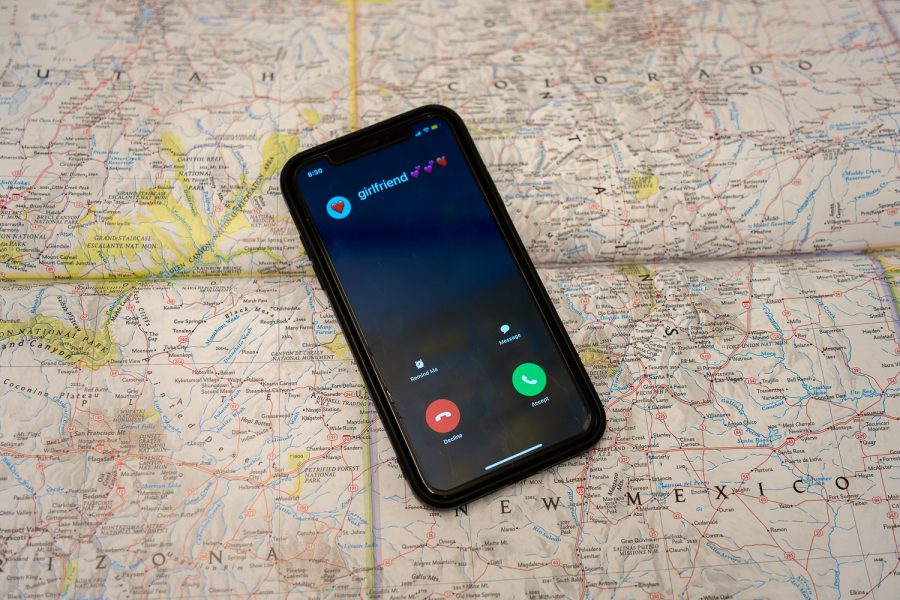Long-Distance Love
While long-distance relationships can cause conflict, they can also make the heart grow fonder.
January 10, 2023
Long distance relationships–a phrase that provokes a challenge. A long-distance relationship is a romantic relationship between two people who live far apart and are unable to meet frequently. For high school students, this could mean just simply going to different schools, but for others, it means living in completely different states. In fact, 75% of college students have been in a long-distance relationship due to many students attending out-of-state schools.
When the two people live far apart, long-term relationships can certainly be strained.
Unfortunately, the average length of a long-distance relationship is just 4.5 months, with 40% of all long-distance relationships ending in a breakup. Plus, the average couple in a long-distance relationship lives 125 miles apart from each other. That is about the same distance from Pittsburgh to Cleveland, which is a two-hour drive. This distance doesn’t allow couples to visit each other as often as they might like, sometimes as little as once a month.
Long-distance relationships are much more common than one might think. In the US alone, more than 14 million people consider their relationship “long-distance.” There are also two main types of long-distance relationships: people who met on online dating sites, and people separated by other circumstances.
While some relationships fail, others succeed. Obviously, both sides must put in the effort to connect over a distance. Couples spend an average of eight hours a week talking on the phone and send each other 343 text messages per week. 75% of all engaged couples made a long-distance relationship work at some point in their relationship, and 10% of those couples continued long distance after marriage.
So what makes a long distance relationship work? Obviously, it’s not being able to physically see each other. Instead, it’s just simply communicating over the phone or FaceTime. It’s also always good to express any problem that one might have about the relationship. Just because a partner might be far away, it doesn’t mean one can get away with everything. Communication is always key. Despite not being able to see each other often, it’s important to make the most of each other’s visits. Finally getting to do the little things definitely feels good. Everything counts.
NASH junior Claire Stewart was in a long distance relationship earlier in the year.
“I met him before I moved to Pittsburgh, so we got to spend a lot of time together during that time,” Stewart said. “However, that was one of the few pros. After I moved, we never got to see each other, and it was a huge adjustment. Because we weren’t with each other every single breathing moment, we got into many arguments, which was really bad for both of us. We always made up, but it ended up just becoming very tiring.”
However, not every long distance relationship ends in a breakup. My parents had a long distance relationship for about a year before they got married. My mother lived in Pittsburgh, and my dad lived in New York. This was before mobile phones, so they solely relied on landline phone calls to each other. They’ve now been married for 19 years.
Overall, the health of a long-distance relationship relies on the effort that the couple is willing to invest into each other. Without the commitment, there are simply too many obstacles to overcome.











